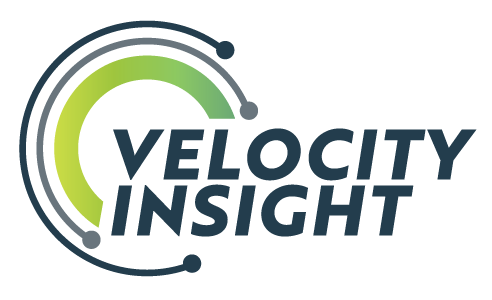I recently wrote on Power BI vs. Spotfire for E&P use cases, and basically made the claim that they each have their strengths, and there are good reasons today for E&P companies to use both. But it’s much more interesting to try to peer into the future to see what’s coming, so let’s make some predictions about what things will look like over the horizon!
Two trends and a question:
- Converging capabilities
- Easier usage/learning for business users
- Is this market like Excel or ERP’s?
Before we dive in, let’s talk about how the Business Intelligence (BI) market has changed over the last 10-15 years. Spotfire took hold in the E&P space, largely in the wake of a wildly successful partnership with Core Laboratories in the late 2000’s. It was a mind-blowing upgrade over Excel, and TIBCO used its O&G mindshare to build a great business within the E&P vertical. Meanwhile, other tools with different strengths built footholds in other industries – Tableau, Qlik, ThoughtSpot, Sisense, Domo, Looker and others. There are dozens of BI tools on the market today, and each have their fans (read the BI reddit for a very deep rabbit hole).
Along comes Microsoft to shake that up in 2015.
Microsoft did what it has often done – show up late, then use their market power and dev dollars to make big waves. Built on the back of other MSFT BI infrastructure like SSAS and Power Pivot while borrowing from Excel’s look and feel, Microsoft quickly claimed a top spot according to groups like Gartner. We see BI tools in the North American E&P space as largely a two-tool race today: most companies are using Power BI, Spotfire, or (very often) both.
Enough history, let’s talk about the future!
Skip to the bottom if you must – long run, I think Microsoft is going to win.
Converging capabilities
I’ve been watching this evolve over several years now, and I’m here to call it – in the long run, the differences in capabilities between BI tools has been shrinking. In the early days, we saw massive differences in performance, featurefulness, and understanding of what “good” was. Those gaps are getting smaller.
In the Cambrian Explosion of data tools over the last 10-20 years, experimentation gave us a spectrum of visions for what BI tools should look like, but that seems to be consolidating. Gartner does a great job of identifying what it thinks matters, but the basic components seem to be:
- Source-agnostic ETL
- Data definition language with GUI/AI assistance
- Ad hoc analysis tools including ability to run Python code for statistical and machine learning workflows
- Interactive visualization layer that balances between easy-to-learn, good looking, and customizable
- Secure report distribution infrastructure across platforms (laptops and smartphones, especially)
There are some clear losers at this point. Script-heavy tools like SAS aren’t winning many new customers. Purely on-prem solutions that don’t offer cloud options have a low ceiling for market share. The winners are increasingly converging on a consensus around the above must-haves: if you want to compete as a modern BI tool, there is a quiz that you must pass.
Easier usage/learning for business users
BI tools are increasingly all about democratized usage. Where tools like SAP Business Objects or Microsoft SSRS rarely left the IT Department, modern BI tools are expected to be usable by regular business users that don’t have coding backgrounds.
While all the BI tools I’ve ever played with do involve an element of programming, I see that the tools winning in the marketplace are doing a better and better job of helping accountants, engineers, geologists, and landmen get their jobs done without having to code everything. GUI assistance is a must-have, and I think it’s likely that AI (specifically LLM’s) will making writing SQL, DAX, and the Spotfire Expression Language easier and easier over time.
Interfaces are getting better too. Power BI’s new On-object Interaction and Spotfire’s new Visualization Properties Experience aren’t perfect yet, but they’re good ideas for making these products more like PowerPoint and less like…..well…..old-school BI tools. (note that these vendors are clearly watching each other and mimicking what users like most – further evidence that capabilities are converging!)
Is this market more like Excel or ERP’s?
I’m not a software marketing expert, but I am fascinated by how different technology fields have dramatically different market dynamics. Take Excel for instance – a single program absolutely dominates the market for WYSIWYG spreadsheet tools. There were competitors in the early days (pour one out for Lotus 1-2-3), and Google Sheets is certainly popular in schools and among Microsoft-haters. But if you’re looking at the English-speaking business world, Excel has astonishingly high market share.
Why has Excel been so dominant? My view is that it’s in part because the list of “must-haves” for a spreadsheet tool in different industries and for different users is very, very similar. That meant that market power (in part due to some aggressive tactics by Microsoft) drove adoption, and the winner kept winning.
On the other hand, Accounting systems (usually called ERP’s) have never consolidated that way, and don’t look like they ever will.
The Accounting/ERP market is highly fragmented – there are hundreds of accounting systems on the market, none with more than 20 or 25% market share in the macro. For small cap E&P companies in North America, our data shows that there are nine applications with at least 5% market share, and none with more than 17%. This looks to be a permanently fragmented slice of the market. Meanwhile, NetSuite (a huge company with lots of customers) has roughly 0% market share for E&P’s – a popular solution that has never learned how to serve our industry.
The ERP space seems to remain fragmented because of 1) niche business needs for different types of companies and 2) overwhelming inertia. It’s incredibly difficult (and expensive) to switch Accounting systems, and serving different industries requires dramatically different features, so small market-share applications can survive and even thrive.
So what’s your prediction?
I don’t have a crystal ball, but I think this “Excel or ERP’s?” question will drive what happens in the E&P BI space. If we think that this market is like spreadsheets, I feel confident Microsoft will win, much like they did with Excel, Outlook, PowerPoint, and more. If we think this market is more like ERP’s, there’s going to be room not just for both Power BI and Spotfire, but probably other new entrants over time.
Long run, I think the BI market is more like Excel than ERPs, and so Power BI is going to win the super-majority of E&P BI market share. The differences in business needs across industries and disciplines aren’t that big, so eventually Microsoft will eat 90+% market share. Spotfire (and future new tools) will keep some loyal fans just like Google Sheets, but Spotfire’s inability to penetrate disciplines like Accounting and Land in most companies are a canary in the proverbial coal mine. Those groups chose Excel a few decades ago, and we see them choosing Power BI on a daily basis in our consulting practice.


